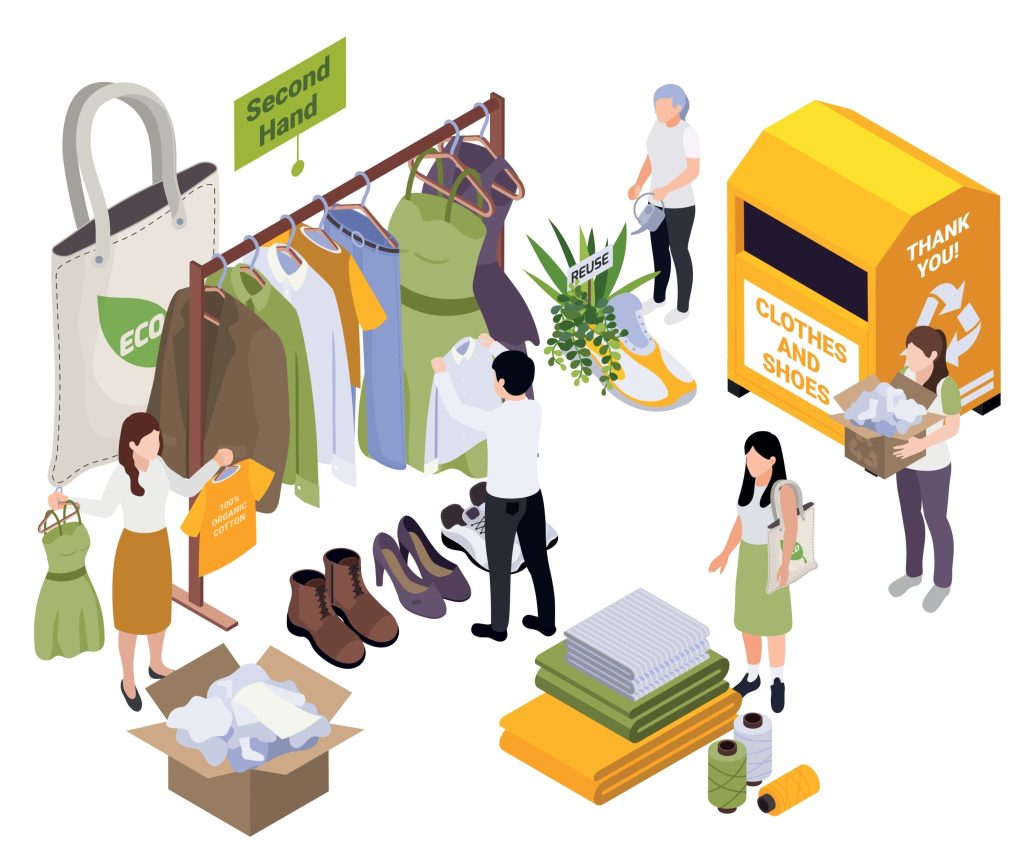Aparna Sharma outlines affordable ways to engage in slow fashion.
Fast fashion prices are low because of cheap and fast labour, mass production, and the lack of care for waste disposal, which in turn causes environmental destruction. Slow fashion by its very definition is the opposite of fast fashion, and when something is not mass produced by paying a fair price and has a very low environmental footprint, the price can never be the same as fast fashion.
Having said this, there are so many interesting ways we can engage in slow fashion today without breaking the wallet. Here are a few simple and easy ways to be a slow fashionista:
Use the clothes you already have.
Look into your wardrobe, and sort your clothes out into different colour combinations to wear for the next 90 days. Take a ‘no new clothes’ challenge and try to use what you already own – these are the most sustainable outfits. It doesn’t matter where you may have bought the outfit from, if it’s already in your wardrobe, using it as many times as possible is a revolutionary slow fashion act by itself, and will cost you nothing.
Go Thrift Shopping
Thrifting refers to shopping at a second-hand or vintage store. There are so many gently-used items which already exist on this planet, and they are looking for a new home. Shopping at a thrift store is very different from shopping at a fast fashion store. In big fashion retail stores, the trends dictate what you should buy, but this isn’t the case in a thrift store. Instead, you buy what you really like, and you are able to exercise your creativity. Clothing available in a thrift store may not be what is trending, but you can pick up items which are unique to your personal style, and when you finish shopping, your bill will be much less than what you spent in a popular fast fashion retail store.
Here’s a list of thrift shops in Bangkok: http://bitly.ws./JWut
Swapping Clothes and Other Fashion Accessories
This is probably the most budget-friendly way to engage in slow and circular fashion. Wearing hand-me-downs from cousins or swapping with friends is a fun and sustainable way to overcome the need for something new. When you bring swapped clothes into your wardrobe, they are ‘new’ for you.
As a mum of two teenagers, I take them for various swap events and most of the clothes in their wardrobe are from swaps. My older daughter is so happy that I introduced her to the concept of swapping at a young age. It is the most guilt-free way to shop.
Are you ready to swap till you drop? A lot of swap events are beginning to look like fun boutique stores; the clothes are neatly hung in an orderly way in hangers, and they’re organised in such a way that you get the feeling of shopping for something new.
Renting
A few designer brands are already giving this option to the consumer. A lot of clothes we buy are used very few times. In some cases, they are used only once, so why buy them? Renting is a more budget-friendly way to wear a new outfit. This option can be particularly useful when you have to attend a formal event or wedding.
Buy Less, Use More
Buy less by buying from sustainable brands which offer styles which are versatile, and can be used multiple times. The price of a well-made item may be more expensive, but if you calculate the cost per wear, you will save more money than constantly buying something cheap.
Repair and Mend
Mending and repairing clothes is a much cheaper option than constantly buying something new. There are so many tailors, cobblers etc. across Bangkok. Take clothes which need alterations to the tailors sitting on the pavement, or alternatively, you can learn to mend and do it by yourself.
Aparna Sharma (Instagram: @stylishsuitcase) is a non-conformist who believes that fashion must become a force for good and style must meet sustainability. She breaks down the nuances of slow fashion and how we can stay stylish without being trendy.








